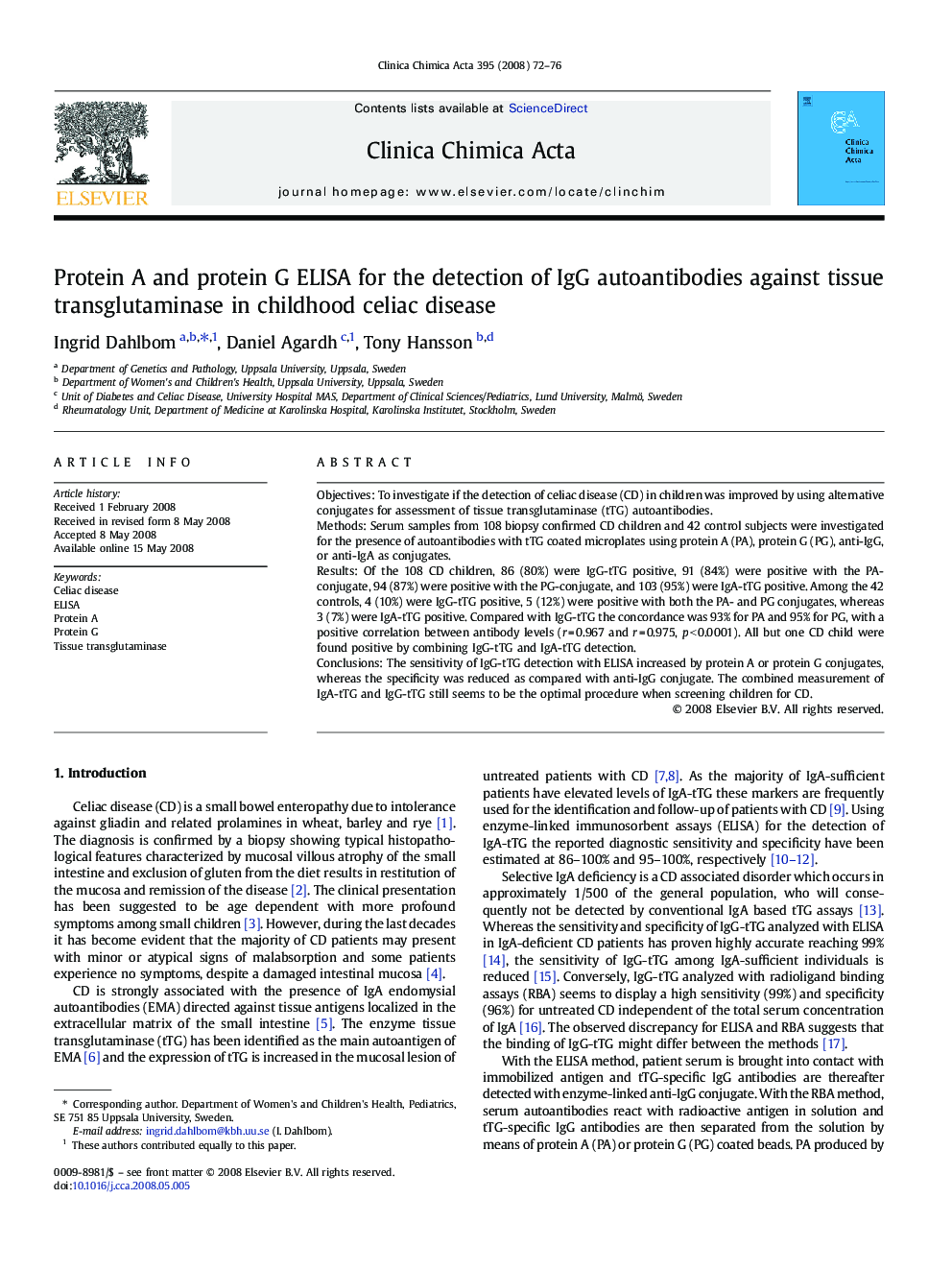| Article ID | Journal | Published Year | Pages | File Type |
|---|---|---|---|---|
| 1967043 | Clinica Chimica Acta | 2008 | 5 Pages |
ObjectivesTo investigate if the detection of celiac disease (CD) in children was improved by using alternative conjugates for assessment of tissue transglutaminase (tTG) autoantibodies.MethodsSerum samples from 108 biopsy confirmed CD children and 42 control subjects were investigated for the presence of autoantibodies with tTG coated microplates using protein A (PA), protein G (PG), anti-IgG, or anti-IgA as conjugates.ResultsOf the 108 CD children, 86 (80%) were IgG-tTG positive, 91 (84%) were positive with the PA-conjugate, 94 (87%) were positive with the PG-conjugate, and 103 (95%) were IgA-tTG positive. Among the 42 controls, 4 (10%) were IgG-tTG positive, 5 (12%) were positive with both the PA- and PG conjugates, whereas 3 (7%) were IgA-tTG positive. Compared with IgG-tTG the concordance was 93% for PA and 95% for PG, with a positive correlation between antibody levels (r = 0.967 and r = 0.975, p < 0.0001). All but one CD child were found positive by combining IgG-tTG and IgA-tTG detection.ConclusionsThe sensitivity of IgG-tTG detection with ELISA increased by protein A or protein G conjugates, whereas the specificity was reduced as compared with anti-IgG conjugate. The combined measurement of IgA-tTG and IgG-tTG still seems to be the optimal procedure when screening children for CD.
